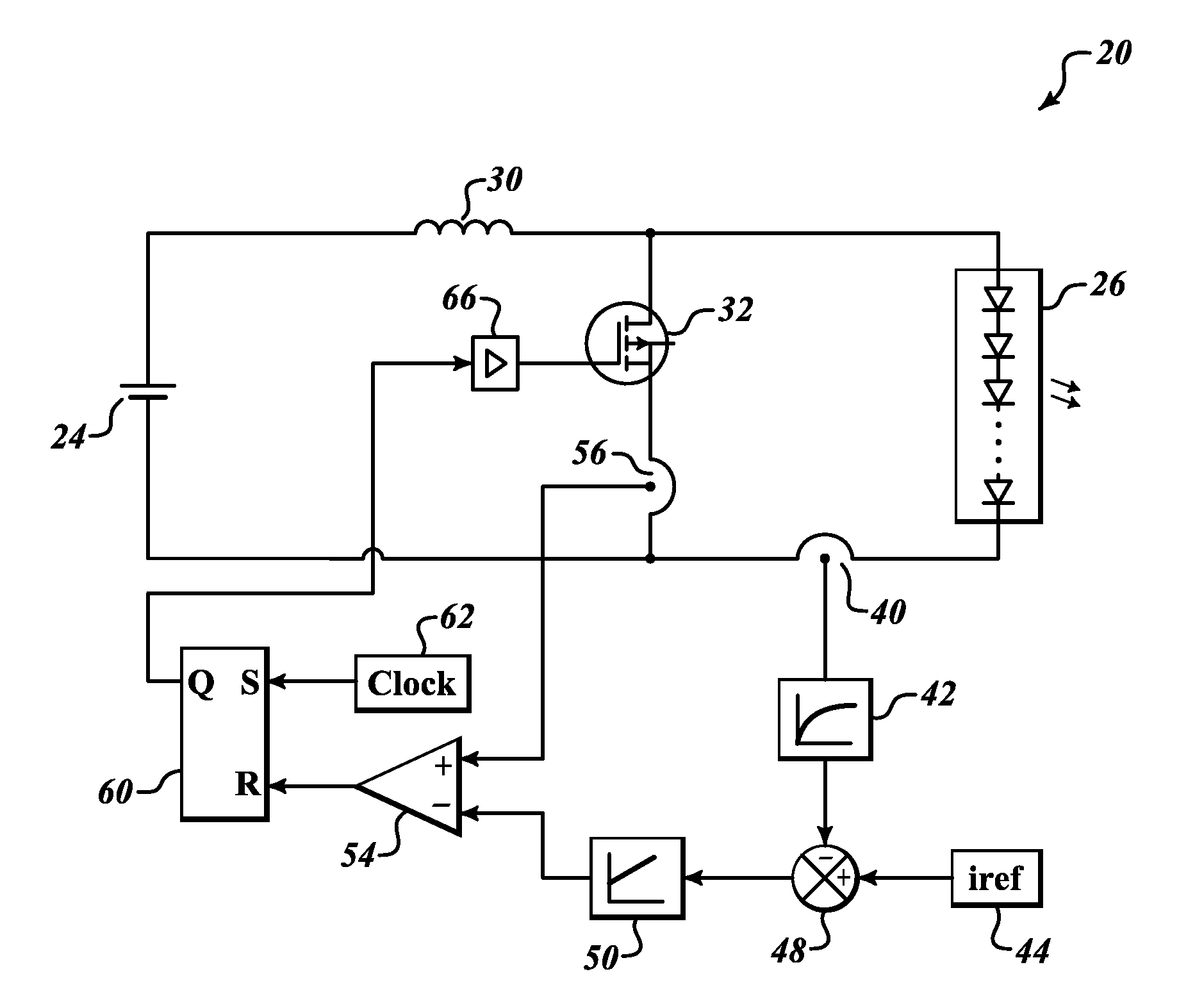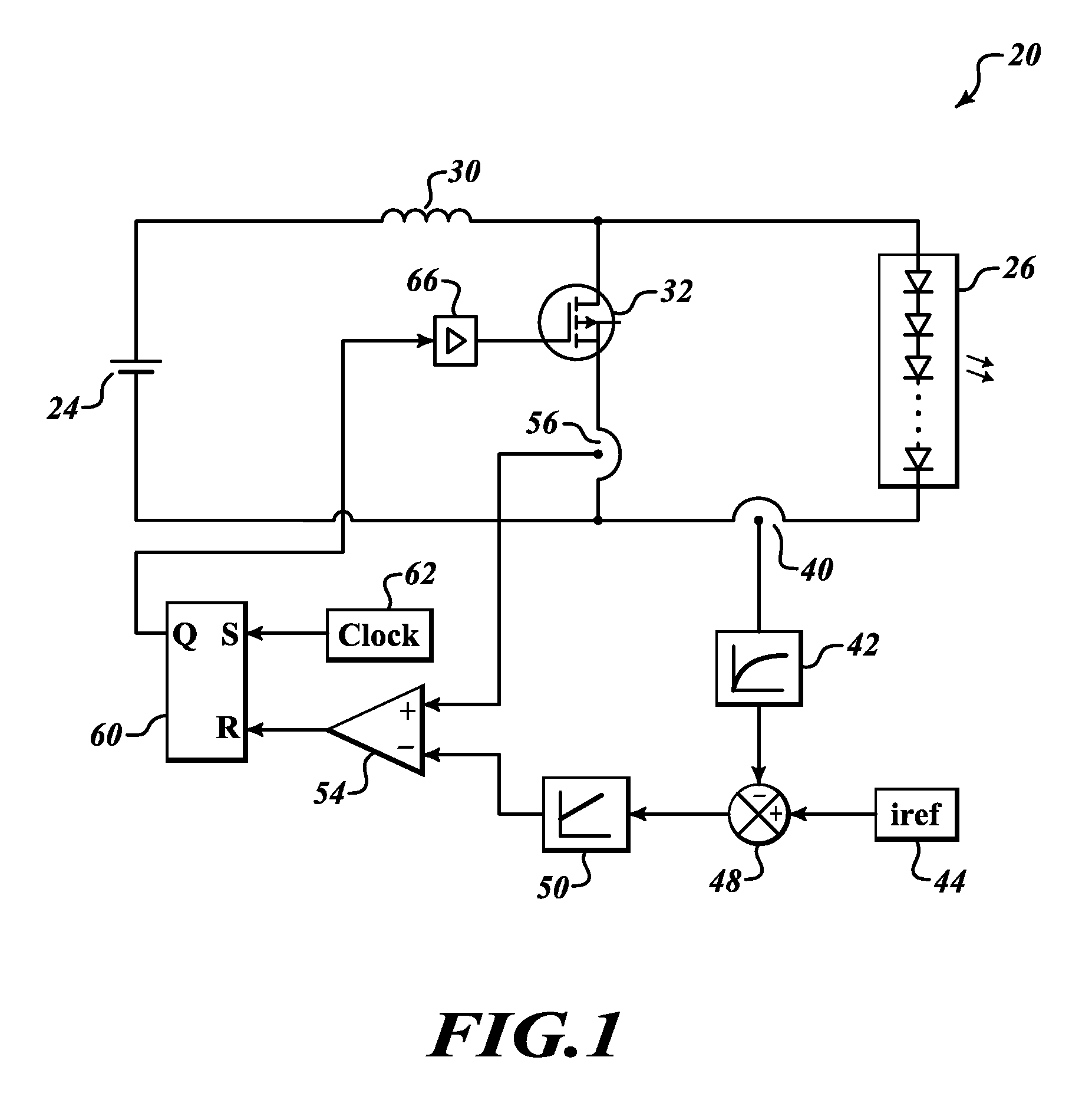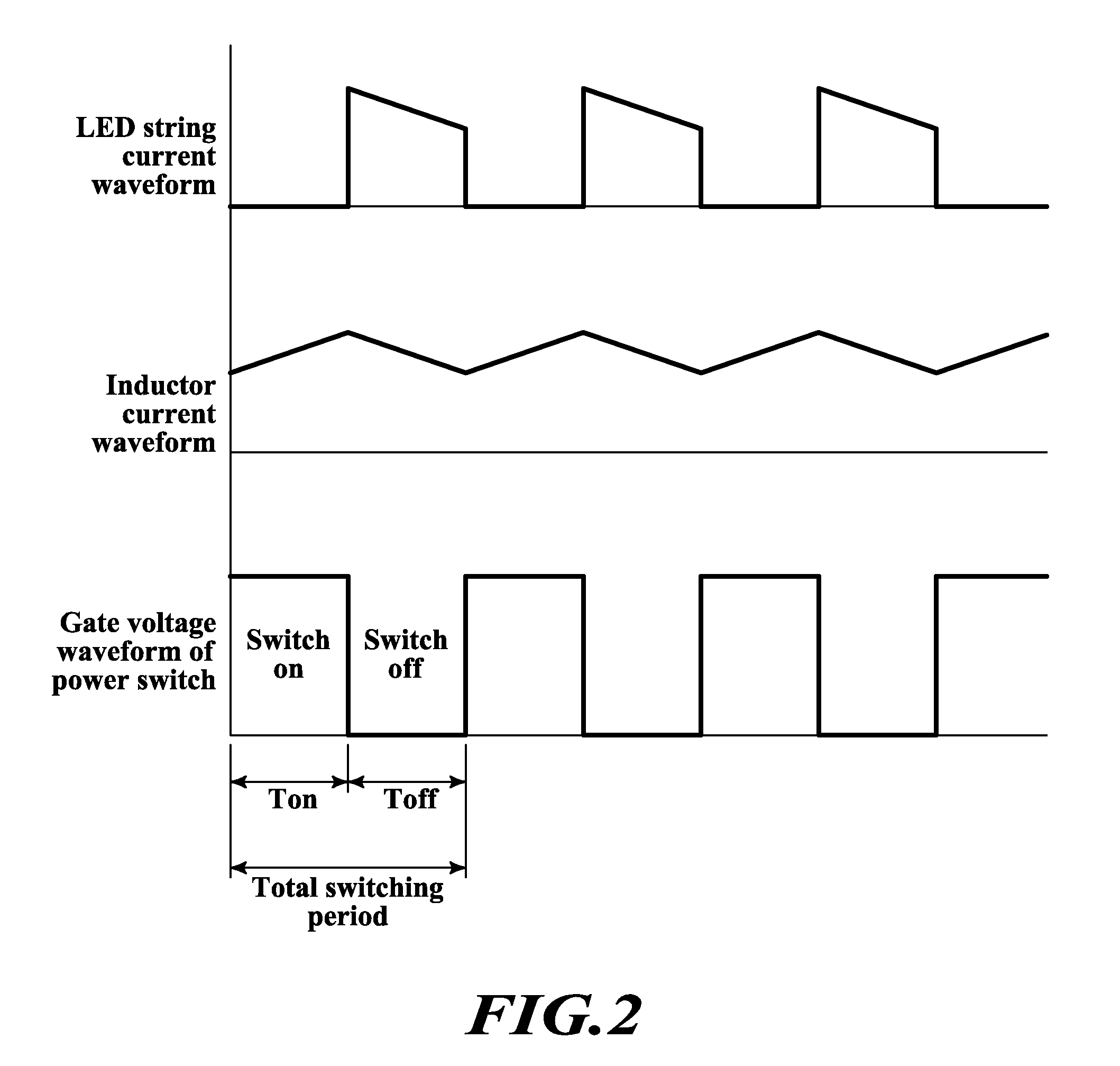Optimal power supply topologies for switched current-driven LEDs
a power supply topology and led technology, applied in the direction of electric variable regulation, process and machine control, instruments, etc., can solve the problems of switching and conduction loss, cost, weight, cost and volume, all these solutions suffer in terms of efficiency, cost, weight and volume, and achieve the advantage of efficiency, cost, volume and weight, without degrading optical performan
- Summary
- Abstract
- Description
- Claims
- Application Information
AI Technical Summary
Benefits of technology
Problems solved by technology
Method used
Image
Examples
Embodiment Construction
[0011]FIG. 1 shows exemplary power and control circuit 20 according to an embodiment of present invention. The power and control circuit 20 includes a direct current (DC) voltage source 24, which supplies required power to drive sufficient current to an LED string 26 through a switching network formed by an input inductor 30 and an actively controlled power semiconductor switch 32. The LED string 26 includes any number of LEDs in series depending upon the application requirement. This topology is recommended for applications in which voltage requirements of the LED string are higher than the input voltage source 24. A first end of the inductor 30 is connected to the positive lead of the DC voltage source 24. A second end of the inductor 30 is connected to a drain (or source depending upon the type of switch) of the semiconductor switch 32 and an anode end of the LED string 26. The cathode end of the LED string 26 is connected to the source (or drain depending upon the type of switch...
PUM
 Login to View More
Login to View More Abstract
Description
Claims
Application Information
 Login to View More
Login to View More - R&D
- Intellectual Property
- Life Sciences
- Materials
- Tech Scout
- Unparalleled Data Quality
- Higher Quality Content
- 60% Fewer Hallucinations
Browse by: Latest US Patents, China's latest patents, Technical Efficacy Thesaurus, Application Domain, Technology Topic, Popular Technical Reports.
© 2025 PatSnap. All rights reserved.Legal|Privacy policy|Modern Slavery Act Transparency Statement|Sitemap|About US| Contact US: help@patsnap.com



